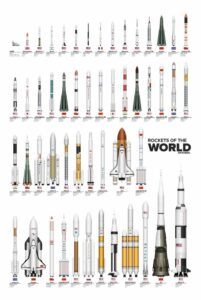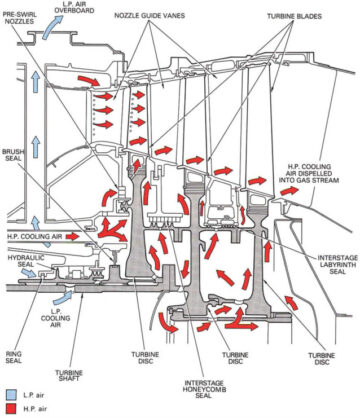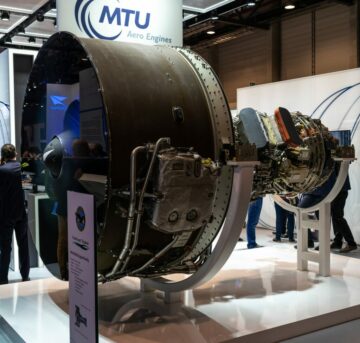The airplane is a complex technical object. Like a human or other organisms, it consists of numerous vital systems; with one of the more critical ones being the fuel system. It is important part of any vehicle, let alone aircraft, aside from the newest electric powered vehicles.
An aircraft’s fuel system provides fuel that is loaded, stored, managed and transported to the propulsion system of the vehicle[1, 2]. As aviation fuel is liquid, this system can be considered as hydraulic. Therefore, it’s able to be mapped out and modeled for analysis in a program like AxSTREAM NET™.
The Typical Fuel System of a Narrow-body Passenger Plane
For an example of a conventional aviation fuel system, consider a typical narrow-body airliner with two engines. Some of the popular planes in this category include the Boeing 737, the Tupolev Tu-204, Airbus A320, Comac C919, Sukhoi Superjet 100, Bombardier CRJ, Embraer E-Jet and Mitsubishi Regional Jet[3].
The storage fuel system is shown in figure 1 is for the Boeing 737-300. The fuel is kept in an integral tank that is divided to five separate subdivisions. They are the central, wing (main) and surge tanks[4].

The hydraulic scheme of the Boeing 737’s fuel system is shown in Figure 2. For fueling and defueling the storage system there are ports on the starboard wing. The system does not have pumps to onboard fuel, so fuel is pumped into the plane via a fuel truck. The other critical part of the fuel system is the line which delivers fuel to the two engines and the auxiliary power unit. In this line there are two boost centrifugal pumps by each engine.
To properly simulate the operation of the fuel system, analyses will be performed at two different operating conditions:
- Delivering fuel to the engines during cruise mode;
- Initial fueling of the tanks.

Simulating Fuel Delivery to the Engines During Cruising in AxSTREAM NET
When an airplane is at cruising altitude and flying at a relatively constant engine speed (such as at 35,000 feet at 500 MPH), the fuel system is supplying a constant flow of fuel to the engines in what can be called a steady state.
In order to simulate a fluid network in a program like AxSTREAM NET, you have to build it first (see Figure 4). The parameters of filters, valves and pipelines are taken from the Commercial Aircraft Airframe Fuel Systems Survey and Analysis made by the FAA (5). The Eaton Type 8410 canister mounted fuel boost pump is selected to simulate the work of the engine boost pumps in the system. This pump was originally designed for the Airbus A320[6]. The characteristics of this pump and its table equivalent in AxSTREAM NET™ are shown in Figure 3.

The result of the simulation is shown in Figure 4. The fuel mass flow rate for each engine is about 0.6 kg/s. The static pressure at the engine inlet at these conditions is 3.088 bar. The mass flow rate at the separate pump is very close (0.196, 0.199, 0.202 kg/s).

The next step was to change the operating conditions by closing one valve in both wing tanks. The results of the simulation can be seen in Figure 5. The system work stable with some decreased pressure magnitude at the engine inlet (from 3.088 to 3.0366 bar). The mass flow distribution is very close for both of the pumps (0.295 and 0.303 kg/s).

with One Pump Shut Off in Each Wing Tank.
Simulation of Fueling While on the Tarmac in AxSTREAM NET
During preflight checks and servicing for a commercial aircraft, one of the main tasks is to fuel the airplane[7]. Typically the refueling truck connects the fuel pipeline to the wing of the aircraft and pumps the fuel from the airport’s fuel farm to the onboard tanks. As the conditions are changing constantly in the fuel system during this process, it should be simulated as in a transient state as opposed to steady-state.
The fuel system represented in AxSTREAM NET™ and the results of the simulation are shown Figure 6.

Figure 7 shows the inlet pressure as well as the time it takes to fuel the aircraft. Two transitional processes are presented in the diagram. The first process is when the shut-off valve of the right wing closes. The second is when the shut-off valve in the left wing closes. Between these two events the process may be described as steady state. The required inlet pressure increases with each subsequent valve closing.

Let’s consider the transitional part of the process in more detail. The closing of the valve can take anywhere from 15 to 30 seconds. The figure below shows the static pressure required by the pumping system as the valve close. The additional pressure required as the valve is closing is proportional to the speed at which it closes. The maximum value is 0.36 bar (3.5 % increase in relative steady pressure after closing).

It’s critical that an aircraft’s fuel system be modeled accurately; and that operation is simulated both during steady state and transient conditions to fully understand the different operating conditions of the system. In this scenario, we were able to both look at the fuel system’s operations during steady-state operation that’s typically encountered when a plane is at cruising speeds/altitudes. We then simulated the operation of the fueling system when the plane is being fueled on the ground, and the valves in different parts of the aircraft close as the fuel is pumped in the plane. During these transient operating conditions, we showed the required inlet pressure changes needed from the pumps in order for the system to operate normally as the valves closed. As a result, and thanks to AxSTREAM NET™, we were able to accurately model this system and simulate its different operating conditions!
Are your working with hydraulic systems like aircraft fuel systems, or perhaps another kind of thermal-fluid system? Have you considered using a simple 1D solver like AxSTREAM NET™ for when a 3D program is overkill? Reach out to us at info@softinway.com to learn more about expediting your project times and getting the results you need quickly and accurately!
References:
- Aircraft fuel system: Wikipedia, 25 May 2020
- Aircraft Fuel Systems: Skybrary, 25 May 2020
- Narrow-body aircraft: Wikipedia, 25 May 2020
- Zdobysław GORAJ, Paweł ZAKRZEWSKI, Aircraft fuel systems and their influence on stability margin // Transactions of the institute of aviation, No.183, pgs. 29-40.
- Commercial Aircraft Airframe Fuel Systems Survey and Analysis: Report DOT/FAA/CT-82/80 // Federal Aviation Administration - June
- Fuel Boost Pump Type 8410 and Canister Type 8411
https://www.eaton.com/ecm/idcplg?IdcService=GET_FILE&allowInterrupt=1&RevisionSelectionMethod=LatestReleased&noSaveAs=0&Rendition=Primary&dDocName=CT_194798 13 May 2020) - Jo Fossen, Preparing Ramp Operations for the 787-8 // Avia, Boeing, 2008, p. 5-14
- FAA Aviation Maintenance Technician Handbook, Volume 2, Chapter 14, Aircraft Fuel System. (FAA-H-8083-31)
- 3d
- Additional
- aircraft
- Airplane
- analysis
- aviation
- Boeing
- build
- change
- Checks
- closed
- commercial
- cruise
- delivery
- detail
- Electric
- events
- faa
- farm
- Federal
- Federal Aviation Administration
- Feet
- Figure
- filters
- First
- flow
- Fuel
- HTTPS
- Increase
- influence
- integral
- IT
- LEARN
- Line
- Liquid
- model
- net
- network
- operating
- Operations
- order
- Other
- Planes
- Popular
- ports
- power
- pressure
- Program
- project
- pumps
- Ramp
- Refueling
- report
- Results
- selected
- Simple
- simulation
- So
- speed
- Stability
- State
- storage
- surge
- Survey
- system
- Systems
- Technical
- time
- Transactions
- transported
- truck
- us
- value
- valve
- valves
- vehicle
- Vehicles
- volume
- Wikipedia
- Wing
- Work








